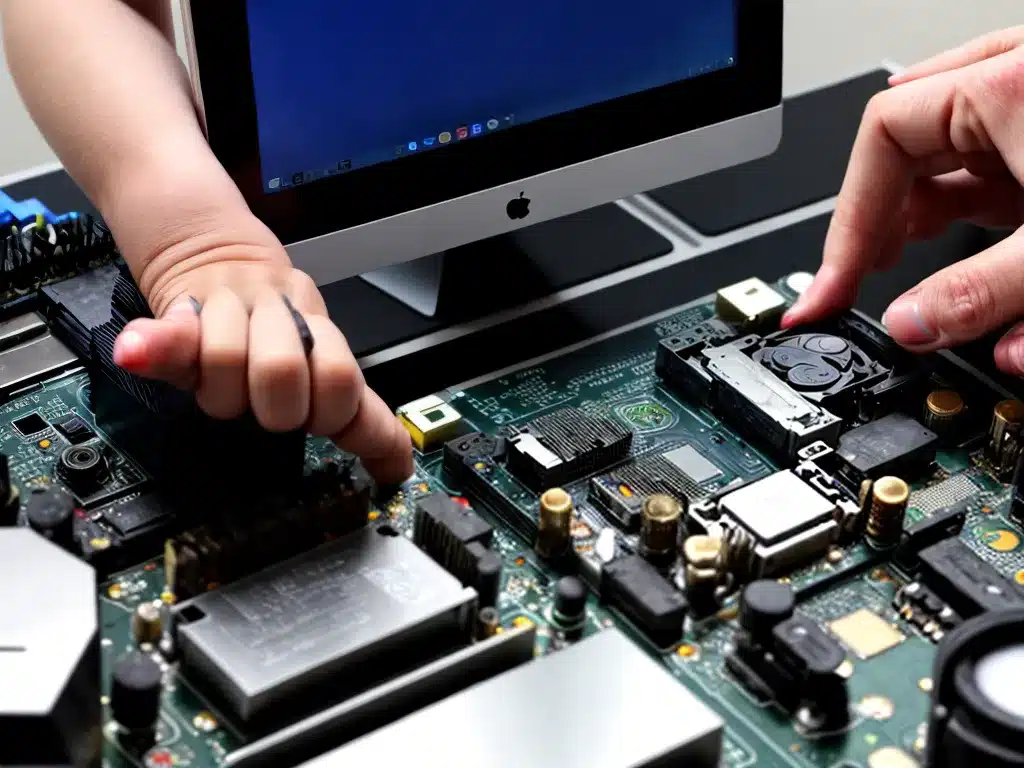
Having your computer turn on but not display anything on the monitor can be frustrating. However, the issue is usually easy to diagnose and fix. Here are the most common reasons why your computer turns on but the display doesn’t work, along with steps to troubleshoot and resolve the problem.
Diagnosing the Issue
When your computer powers on but the monitor remains blank, there are a few key components that could be the culprit:
The Monitor
The first thing to check is whether the monitor itself is working properly.
-
Make sure the monitor is plugged into a power source and turned on. If the monitor is not receiving power, it will not display anything.
-
Check the monitor cables. Make sure the video cable connecting the monitor to the computer is plugged in securely on both ends.
-
Try using a different video cable. Switch out the monitor cable for a spare one if possible. The cable could be defective.
-
Connect the monitor to another device. Connect the display to another computer or laptop. If the monitor works, then the problem is with the original computer and not the display.
The Video Card
If the monitor is confirmed to be working properly, the next thing to check is the computer’s video card.
-
Reseat the video card. Remove and reinsert the graphics card into the PCIe slot to make sure it is properly connected.
-
Try using a different graphics card. If you have another compatible graphics card available, swap it into the computer to test if the original card is faulty.
The RAM
Faulty RAM can also cause display issues.
-
Try removing and reseating the RAM modules.
-
If you have multiple RAM sticks, remove them one at a time and test the display output with each stick individually.
-
If the display works with one stick but not the other, it indicates the problematic stick should be replaced.
Fixing the Display Issue
Once you’ve diagnosed the source of the problem, the solution is straightforward:
-
If the monitor is the issue, replace the monitor video cable or connect a working display.
-
If the issue is with the video card, reseat the graphics card properly or replace it if damaged.
-
For RAM issues, reseat or swap out the faulty RAM stick.
Additionally, make sure you have installed any required drivers for the graphics card, and that the video output ports on the card are not damaged.
In some cases, the computer motherboard may also need troubleshooting. Overall, methodically checking each component should reveal the culprit, and allow you to get the computer display working again.
Preventing Future Occurrences
To help avoid display problems in the future:
-
Ensure all video cables are undamaged and securely connected.
-
Keep the computer, graphics card, and RAM properly dusted and cooled.
-
Install graphics card driver and OS updates.
-
Consider upgrading to newer hardware if components are aging.
-
Use a surge protector to protect against power issues.
Carefully examining error patterns and applying appropriate solutions will get your display restored quickly. Proper computer maintenance will help minimize disruptive monitor malfunctions.












